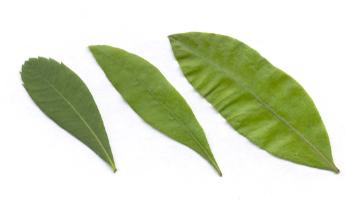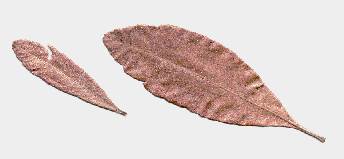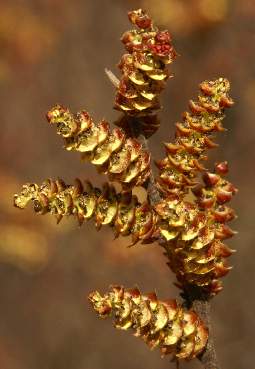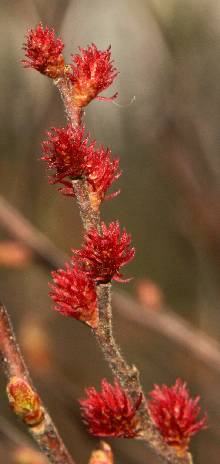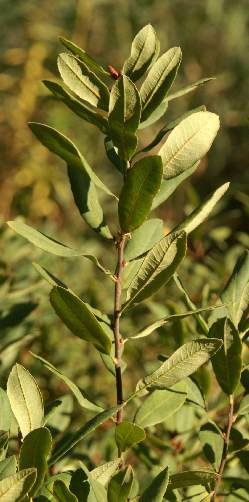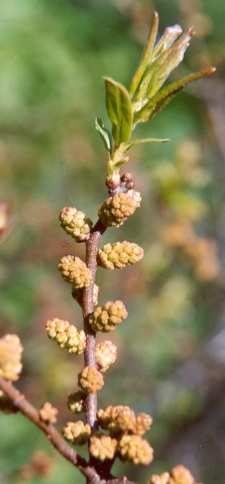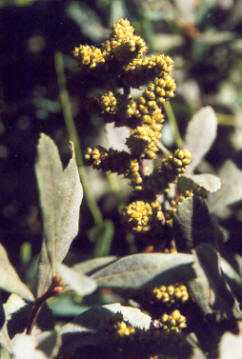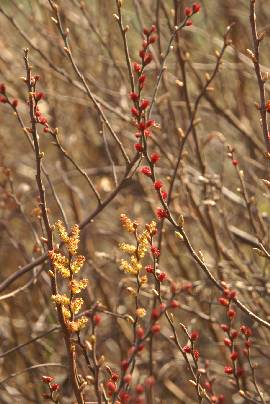
|
| Gale (flowering) |
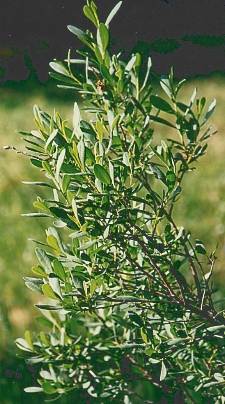
|
| Gale (sterile plant) |
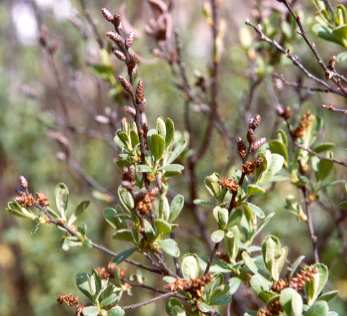
|
| Gale plant with withered male flowers |
Like bay leaves, for which gale is often an interesting alternative, gale leaves should be used whole and steeped in soups and sauces, to be removed before serving: In that way, no bitter flavour can be imparted. I find gale a pleasant addition to boiled vegetable stews and legumes; it is less efficient for meat dishes.
Historically, the most important application of gale was, however,
the flavouring of beer.
Beer brewing is an ancient art in Central and Western Europe; hop (Humulus lupulus), however,
had but a small place in medieval beer brewing.
Instead, brewers used a large number of aromatic plants, of which gale was one
of the most efficient and also most cheap. The multitude of beer varieties
culminated in Early Renaissance Britain.
In these days, beer was flavoured with a mixture of herbs and spices called
gruit or grut, not only to alter the taste, but
also to improve the durability. Alcohol’s psychoactive effects were often
supported by quite toxic witchcraft herbs
like henbane (Hyoscyamus niger),
which contains alkaloids of the atropine group and is also a very powerful preservative.
But these drastic additives were abandoned at the
end of the Middle Ages, when increasing hygienic standards made them largely
unnecessary. Gale has only mild (if any) psychoactive properties, and is much
less dangerous than henbane.
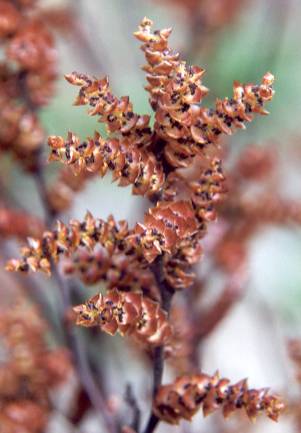
|
| Male gale flowers |
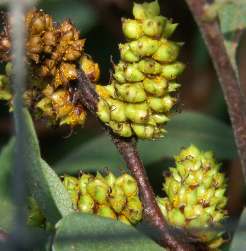
|
| Unripe gale fruits |
Brewers in the 16.th and 17.th century used a large variety of plant extracts for their gruit: Expensive Asian spices for those who could afford (ginger, cloves, galanga, cinnamon, nutmeg, and even Indian bay-leaves), cheaper imports (grains of paradise, coriander, licorice) and local herbs for less well-off customers (fennel, mint, juniper, rosemary and gale).
The main advantage of hop is its great power to preserve the beer for a long time; but wild hop has an disagreeable, bitter taste. As soon as new, less bitter hop cultivars were bred in the 18.th century (Abbot), they very quickly replaced the old herbs.
Special beers with spices in stead of (or in addition to) hop are hardly
produced commercially today, as beer drinkers have been trained to associate
beer
with hop
(cf. also the influential German purity law Reinheitsgebot
from 1516); but home brewing enjoys increasing
popularity,
even outside the circle of Middle Age enthusiasts. Today’s home brewers often
use orange peel (mostly of the Caribbean curação orange), vanilla and cardamom as
alternatives to hop. These beverages, being brewed by fermenting malt with
yeast, are true beers and must be clearly distinguished from sweetened herb
extracts of the kind of root beer (see sassafras) or ginger ale (see ginger).
